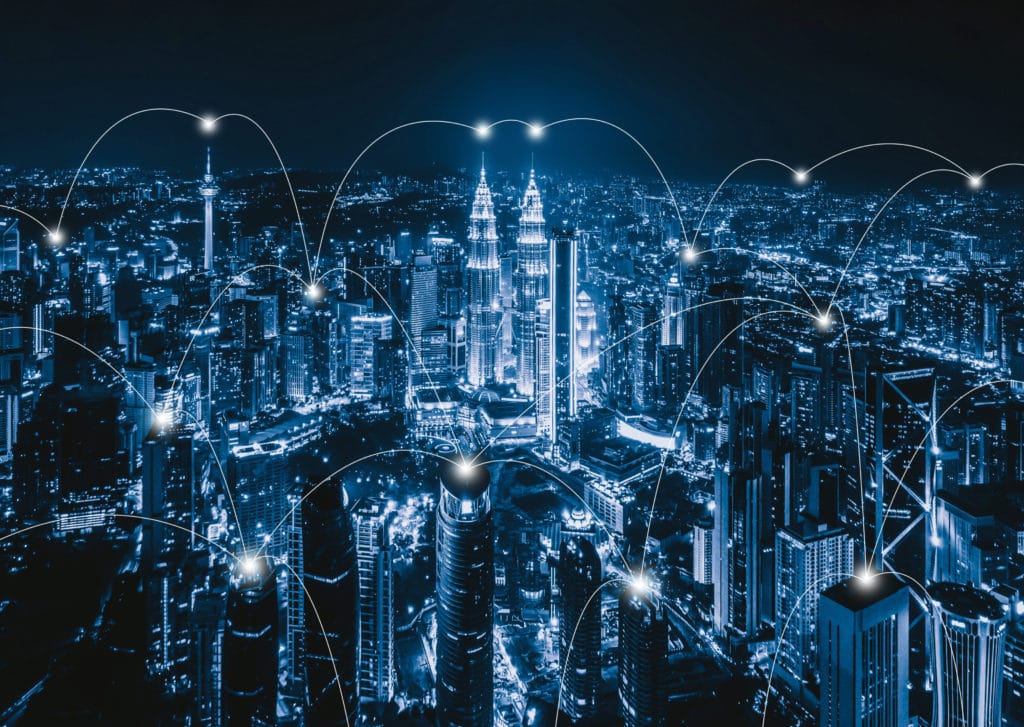Cognitive Digital Twins

The next step in Digital Twin evolution
Until a few years ago, we were comfortable with the distinction between physical activities that can be aided and replaced by machines and “mental” activities (creativity, reasoning, decision, emotion) that have traditionally been characterized as immutably human. However, artificial intelligence, the huge increase in processing power, and the invention of the sensors that we are using to mirror both the physical environment, and whatever happens within that environment, have started to change this perception.
Digital Twins, which are digital representations of physical assets, have attracted enormous attention from both industry and academia since they were invented. Digital twins have been implemented in a variety of industries and sectors, delivering immediate benefits to organizations looking to lower costs, optimize processes, and innovate. From aircraft manufacturing to smart city management and building control, to the multitude of other industrial applications that the technology is being used for, digital twins have formed the foundation of a totally new way of doing things.
Organizations looking to get even more value out of their digital twins have started looking for ways to make them even smarter, hoping to overcome challenges like the need to influence physical objects, and large, complex asset data sets. This has led to the rise of the Cognitive Digital Twin, which integrates advanced learning and self-discovery capabilities.
Defining Cognitive Digital Twins
Cognitive Digital Twins are distinguishable by six key functionalities:
- Perception: The process of forming useful representations of data related to the physical twin and its physical environment for further processing.
- Attention: The process of focusing selectively on a task or a goal or certain sensory information either by intent or driven by environmental signals and circumstances.
- Memory: A single process that holds information briefly while working with it (working memory), remembers episodes of the physical twin’s life (episodic memory), and knowledge of facts of the environment and its interaction with the physical twin (semantic memory). This remembering includes encoding information (learning it by perceiving and relating it to past knowledge), storing and maintaining it, and retrieving it when needed.
- Reasoning: Drawing conclusions consistent with a starting point, a perception of the physical twin and its environment, a set of assertions, a memory, or some mixture thereof.
- Problem-solving: The process of finding a solution for a given problem or achieving a given objective from a starting point.
- Learning: The process of transforming the experience of the physical twin into reusable knowledge for new experiences.
In the same way that Digital Twins are bridging the physical world with cyberspace, Cognitive Digital Twins can bridge the “mental” space – embedding knowledge and executing on that knowledge. Cognitive Digital Twins can learn and evolve, integrating different sources of information for a specific purpose. In other words, they use a set of algorithms that allow them to acquire, process, and store information to think and make decisions.
By enriching Digital Twin models with cognitive capabilities, higher-level inference can be achieved. Questions like what, when, how, in what context, what-if, and so on, can be answered based on reasoning. For example, the Cognitive Digital Twin of a service fulfillment or product manufacturing process will be able to examine the current structure of a system or a process and give recommendations about what can be improved at the current moment.
Taking building management to a new level
It’s still early days in the development of Cognitive Digital Twins, but many applications of the technology are being found. We are already seeing the benefits in our Smart City Campus project with Toronto Metropolitan University (formerly Ryerson).
FuseForward and Toronto Metropolitan University (TMU) have been working together to develop a Cognitive Digital Twin for building management and operations. The Cognitive Digital Twin, populated by construction information, facility management data, and data streamed from the Building Automation System (BAS), aggregates, explores, and visualizes information on demand.
Using advanced machine learning to access both real-time and historical data, coupled with scalable cloud-based computational resources, the Cognitive Digital Twin is able to perceive events, identify irrelevant data, and reason. We have created an optimized workflow for 3D modeling and visualization for campus outdoor and indoor environments as well as for building energy efficiency monitoring through remote sensing thermal imagery.
Built on AWS infrastructure, this Cognitive Digital Twin is the next step in the evolution of the Digital Twin, allowing us to effectively deal with unforeseen situations by exploiting expert knowledge. We will be unveiling more about this project, and the success we are seeing at the TMU campus in a presentation at the 2022 AWS Summit Toronto on Jun 22nd-23rd. Register now.
